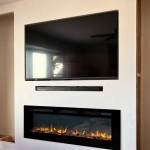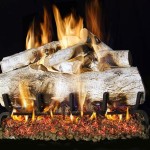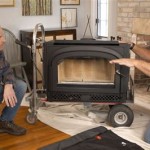Open Fireplace Flue: A Vital Component for Safe and Efficient Operation
An open fireplace is a beloved feature in many homes, offering warmth, ambiance, and a sense of tradition. However, for an open fireplace to operate safely and efficiently, a properly functioning flue is essential. The flue, also known as the chimney, serves as the vital conduit that carries combustion byproducts, including smoke, gases, and creosote, away from the living space and into the atmosphere.
The flue's primary function is to ensure proper ventilation and prevent the buildup of harmful substances within the home. Without a working flue, smoke and gases would fill the living area, posing severe health risks and even fire hazards. The flue's design and construction play a critical role in its performance and safety.
The Importance of Flue Design and Construction
The design and construction of an open fireplace flue are crucial for its effectiveness and safety. Modern flues typically consist of a vertical shaft made of fire-resistant materials such as brick, concrete, or stainless steel. The flue's inner surface is usually lined with a smooth, non-combustible material like mortar or a specialized flue liner. This lining helps prevent creosote buildup and ensures smooth gas flow.
The diameter of the flue must match the size of the fireplace opening to ensure proper draft and ventilation. A flue that is too narrow can restrict airflow, leading to smoke spillage and inefficient burning. Conversely, a flue that is too wide can reduce draft and cause smoke to back up into the home.
Flue Maintenance and Inspection
Regular maintenance and inspection are vital for maintaining a safe and efficient open fireplace flue. Creosote, a highly flammable by-product of wood burning, accumulates within the flue over time. If left unchecked, it can eventually block the flue, hindering airflow and creating a fire hazard.
Professional chimney sweeps are trained to inspect the flue for creosote buildup, blockages, and other issues. They can safely remove creosote deposits and ensure the flue is in good working order. Routine inspections are typically recommended at least once a year, and more frequently if the fireplace is used extensively.
Signs of a Flue Problem
Recognizing signs of a potential flue problem can help homeowners address issues before they escalate. Some common indicators of a malfunctioning flue include:
- Smoke spilling into the room during burning
- Excessive creosote buildup
- Soot staining on the fireplace surround or walls
- A whistling or roaring sound coming from the flue
- Unusual drafts or air currents in the room
- Difficulty getting the fireplace to light or maintain a flame
If any of these signs are present, it is essential to contact a qualified chimney sweep for inspection and necessary repairs or cleaning.

How To Open A Chimney Damper Traditional Fireplace Pros

How To Use A Fireplace Damper The Right Way

Understanding The Anatomy Of A Fireplace Madewell Masonry

How Do Fireplace Dampers Work Zoro Com

How To Open A Chimney Damper Traditional Fireplace Pros

What Is A Chimney Flue The Mad Hatter

Flue Throat Designing Buildings

The Purpose Of Your Chimney Damper Asheville Nc Environmental

When Should You Close The Damper On A Fireplace Tips

Fireplaces Chimney Flue Installation Bristol








